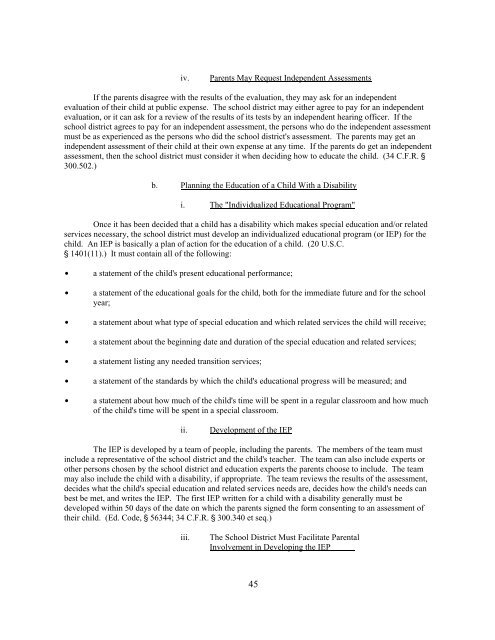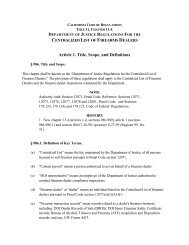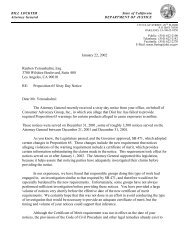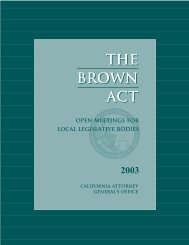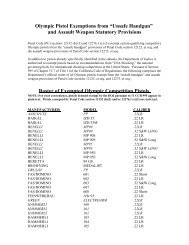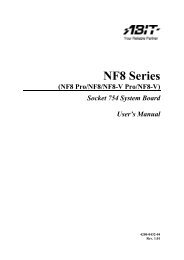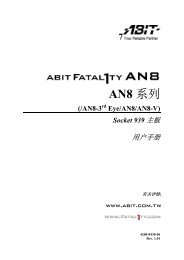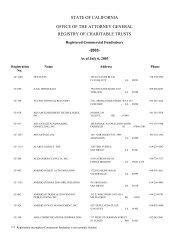Legal Rights of Persons With Disabilities - Ossh.com
Legal Rights of Persons With Disabilities - Ossh.com
Legal Rights of Persons With Disabilities - Ossh.com
You also want an ePaper? Increase the reach of your titles
YUMPU automatically turns print PDFs into web optimized ePapers that Google loves.
iv.<br />
Parents May Request Independent Assessments<br />
If the parents disagree with the results <strong>of</strong> the evaluation, they may ask for an independent<br />
evaluation <strong>of</strong> their child at public expense. The school district may either agree to pay for an independent<br />
evaluation, or it can ask for a review <strong>of</strong> the results <strong>of</strong> its tests by an independent hearing <strong>of</strong>ficer. If the<br />
school district agrees to pay for an independent assessment, the persons who do the independent assessment<br />
must be as experienced as the persons who did the school district's assessment. The parents may get an<br />
independent assessment <strong>of</strong> their child at their own expense at any time. If the parents do get an independent<br />
assessment, then the school district must consider it when deciding how to educate the child. (34 C.F.R. '<br />
300.502.)<br />
b. Planning the Education <strong>of</strong> a Child <strong>With</strong> a Disability<br />
i. The "Individualized Educational Program"<br />
Once it has been decided that a child has a disability which makes special education and/or related<br />
services necessary, the school district must develop an individualized educational program (or IEP) for the<br />
child. An IEP is basically a plan <strong>of</strong> action for the education <strong>of</strong> a child. (20 U.S.C.<br />
' 1401(11).) It must contain all <strong>of</strong> the following:<br />
$ a statement <strong>of</strong> the child's present educational performance;<br />
$ a statement <strong>of</strong> the educational goals for the child, both for the immediate future and for the school<br />
year;<br />
$ a statement about what type <strong>of</strong> special education and which related services the child will receive;<br />
$ a statement about the beginning date and duration <strong>of</strong> the special education and related services;<br />
$ a statement listing any needed transition services;<br />
$ a statement <strong>of</strong> the standards by which the child's educational progress will be measured; and<br />
$ a statement about how much <strong>of</strong> the child's time will be spent in a regular classroom and how much<br />
<strong>of</strong> the child's time will be spent in a special classroom.<br />
ii.<br />
Development <strong>of</strong> the IEP<br />
The IEP is developed by a team <strong>of</strong> people, including the parents. The members <strong>of</strong> the team must<br />
include a representative <strong>of</strong> the school district and the child's teacher. The team can also include experts or<br />
other persons chosen by the school district and education experts the parents choose to include. The team<br />
may also include the child with a disability, if appropriate. The team reviews the results <strong>of</strong> the assessment,<br />
decides what the child's special education and related services needs are, decides how the child's needs can<br />
best be met, and writes the IEP. The first IEP written for a child with a disability generally must be<br />
developed within 50 days <strong>of</strong> the date on which the parents signed the form consenting to an assessment <strong>of</strong><br />
their child. (Ed. Code, ' 56344; 34 C.F.R. ' 300.340 et seq.)<br />
iii.<br />
The School District Must Facilitate Parental<br />
Involvement in Developing the IEP<br />
45


